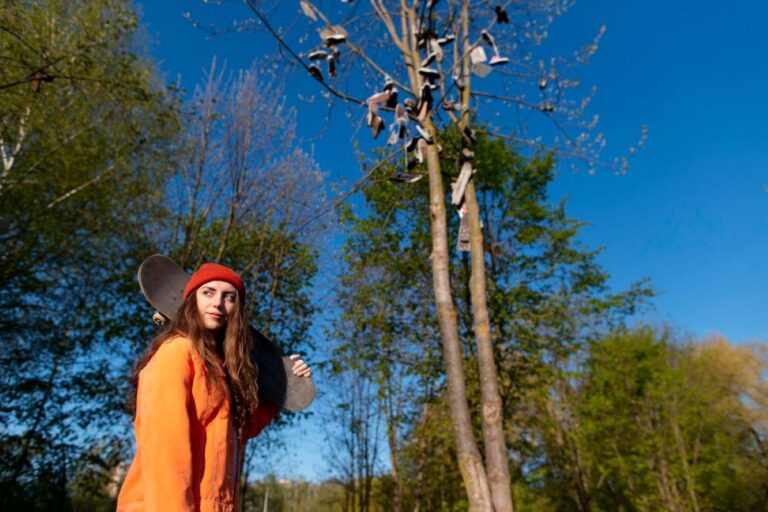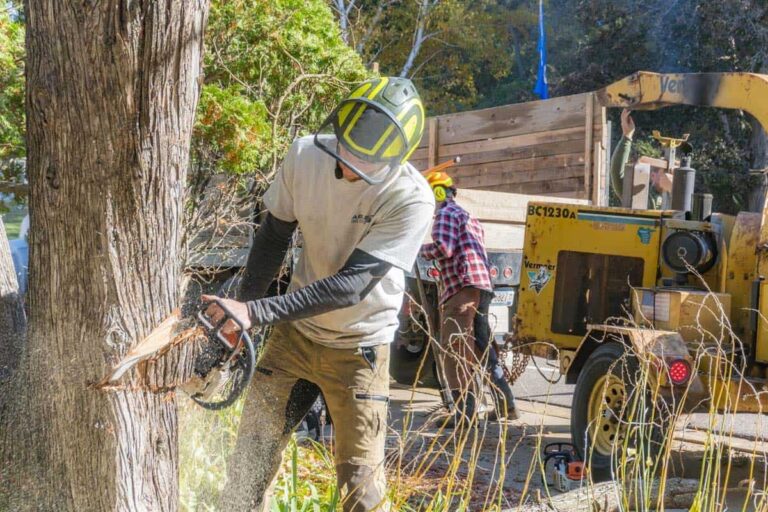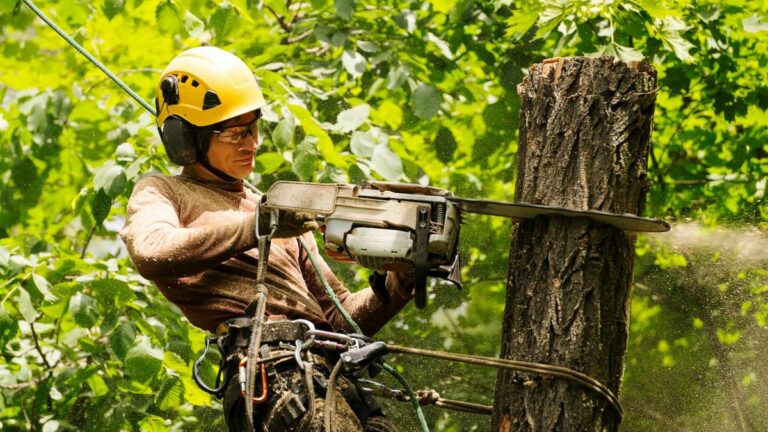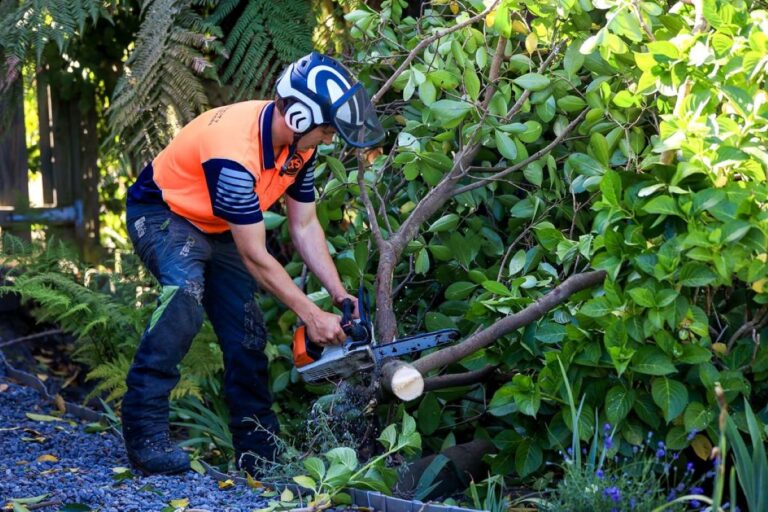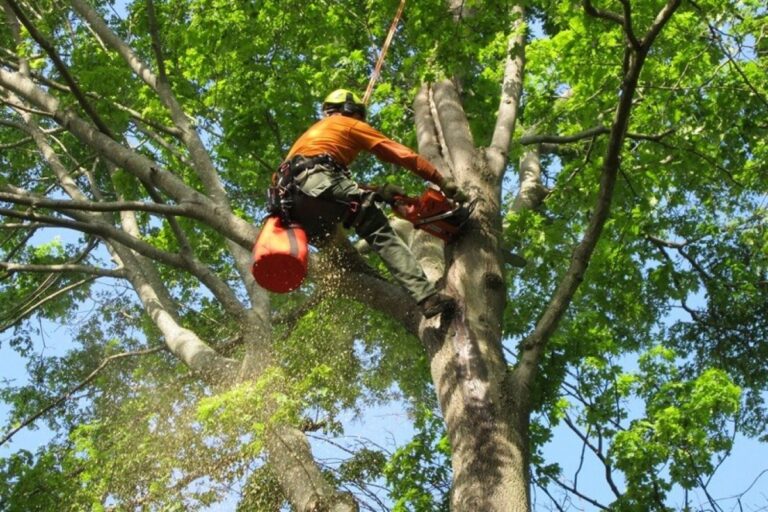Arborist Cheltenham how to spot and manage leaning or unstable trees
Leaning trees and unstable trees are serious dangers to people and property, especially during Cheltenham’s wet and windy winter months. A leaning tree is one that is visibly tilted from its natural upright position, while an unstable tree has structural weaknesses that make it unable to stand safely. These problems can lead to catastrophic failures, causing injuries, damage to property, and costly emergency repairs.
To ensure tree safety around your home, it is crucial to detect problems early and manage them proactively. By identifying warning signs before a tree becomes critically unstable, you can plan interventions instead of relying on emergency responses. This not only protects your family but also helps maintain the value of your property and often saves the tree through timely care.
This guide is specifically designed for homeowners in Cheltenham who want to understand how to recognise and address tree instability. Professional arborist Cheltenham have the local expertise, qualifications, and equipment needed to effectively assess and manage these risks. Their services will help keep your outdoor areas both beautiful and safe all year round.
How Can You Identify a Leaning or Unstable Tree?
Signs of Leaning Trees
Look out for visible tilting that has developed recently, especially after storms or strong winds. A tree that suddenly appears at an angle is different from one that has grown naturally curved over many years.
Indicators of Unstable Trees
Watch for these critical warning signs:
- Cracks in the trunk or major branches – These fissures compromise structural integrity and often appear as vertical splits or horizontal separations in the bark
- Exposed or lifting roots – Soil heaving around the tree base indicates the root system is failing to anchor properly
- Hanging branches – Dead or partially broken limbs suspended in the canopy pose immediate danger
- Fungal growth – Mushrooms or conks growing on the trunk signal internal decay
- Soil cracks – Ground fissures near the base suggest the tree is pulling away from its foundation
If you notice multiple indicators on a tree, it requires immediate attention. This combination of symptoms often signals advanced instability that could lead to sudden failure.
Why Is Early Detection Crucial for Tree Stability?
Early detection tree risk assessment prevents minor structural issues from escalating into dangerous situations. A small crack in a trunk can rapidly worsen during storms, whilst a slight lean may indicate progressive root failure that could lead to complete collapse.
Catching instability early allows for targeted interventions that preserve the tree whilst eliminating hazards. Property owners who address warning signs promptly avoid the substantial costs associated with emergency tree removal, structural repairs to buildings, or compensation claims from injuries.
The financial implications extend beyond immediate damage. A fallen tree can destroy fencing, vehicles, outbuildings, and even neighbouring properties. Insurance claims for tree-related incidents often involve complex liability questions, particularly when evidence suggests the owner knew or should have known about the tree’s condition.
Timing matters critically during Cheltenham’s wet winter months when saturated soil reduces root anchorage. Trees that appear stable in summer may become hazardous once ground conditions deteriorate, making pre-season assessments essential for preventing weather-related failures.
How Do Regular Tree Assessments Help Manage Risks?
Scheduled inspections by qualified professionals create a systematic approach to identifying structural weaknesses before they become hazardous. A comprehensive tree assessment Cheltenham service examines root stability, trunk integrity, and canopy health through detailed visual surveys and diagnostic tools.
Proactive tree care through regular assessments typically includes:
- Checking for soil movement or exposed roots indicating foundation issues
- Identifying decay patterns in trunk cavities or branch unions
- Measuring lean angles and monitoring changes over successive visits
- Detecting pest infestations or disease symptoms affecting structural strength
Professional arborists document findings from each inspection, creating a historical record that reveals gradual changes invisible during casual observation. This data-driven approach enables precise timing for interventions like selective pruning or cabling systems.
Seasonal assessments prove particularly valuable before Cheltenham’s wet winter months, when saturated soil and strong winds place maximum stress on compromised trees. Arborist Cheltenham how to spot and manage leaning or unstable trees services establish baseline conditions and track deterioration rates, allowing property owners to address concerns during optimal weather windows rather than emergency situations. To further understand the importance of these assessments, you can explore this detailed guide on how regular tree assessments help manage risks.
What Are Effective Strategies for Managing Leaning or Unstable Trees?
Managing leaning trees requires a combination of strategic pruning and preventative maintenance to reduce structural stress and minimise hazards. Homeowners can take several practical steps to address instability before it becomes dangerous.
Pruning Techniques for Stabilising Trees
Pruning techniques play a vital role in stabilising compromised trees:
- Crown reduction: removes weight from the canopy, decreasing wind resistance and reducing strain on weakened trunks
- Selective branch removal: eliminates dead, diseased, or crossing limbs that could snap during storms
- Canopy thinning: allows wind to pass through more easily, reducing the likelihood of uprooting

Protecting the Root Zone
Beyond pruning, protecting the root zone is essential. It’s crucial to avoid excavation or construction within the tree’s drip line as disturbed roots compromise stability. For valuable trees with structural weaknesses, installing cables or bracing systems may provide temporary support. This guide offers further insights into effective root zone protection strategies.
Watering and Mulching for Tree Health
Regular watering during dry periods strengthens root systems, whilst mulching around the base helps retain moisture and protects against soil erosion. These combined approaches significantly reduce risks associated with leaning or unstable trees. Additionally, following proper planting and transplanting guidelines can further enhance tree stability and health.
When Should You Seek Professional Help from an Arborist in Cheltenham?
Certain warning signs demand immediate attention from a professional arborist Cheltenham residents can trust. Contact an expert when you notice large cracks in the trunk exceeding 5cm in width, as these indicate severe structural compromise that requires specialist assessment.
Trees leaning more than 15 degrees from vertical, particularly those that have shifted suddenly after storms, need urgent evaluation. Ground disturbances around the base—such as soil heaving, cracking, or exposed roots—signal root system failure that only trained professionals can properly diagnose. It’s crucial to seek professional advice especially after severe weather events, as these can exacerbate existing issues or create new ones. Understanding how to prepare your trees for storm season, and knowing when to call in an expert can make all the difference.
Seek expert help when:
- Hanging branches appear in the canopy, especially those larger than 10cm in diameter
- Trees lean towards buildings, power lines, or high-traffic areas
- You’re uncertain about the severity of visible damage
- Previous storm damage has worsened over time
- Multiple concerning symptoms appear simultaneously
Emergency situations, including trees that have partially uprooted or show signs of imminent collapse, require immediate contact with a licensed professional arborist Cheltenham homeowners rely on for safe intervention. Visit https://www.safework.nsw.gov.au/hazards-a-z/tree-trimming-removal-and-arborist-work to get more about tree work.
What Services Do Arborists Offer for Dealing with Unstable Trees?
Arborist services Cheltenham encompass comprehensive solutions for managing tree instability. Professional arborists conduct detailed structural assessments using specialized equipment to evaluate the extent of damage and determine whether a tree can be saved or requires removal.
Key services include:
- Emergency tree removal for trees posing immediate danger to people or property
- Precision pruning to redistribute weight and reduce wind resistance in leaning trees
- Cabling and bracing systems to provide structural support for trees with weakened trunks or branches
- Root zone management to address soil compaction and improve stability
- Crown reduction to decrease the load on compromised trees
- Stump grinding following necessary removals
Licensed professionals bring expertise through proper equipment like cranes, rigging systems, and safety gear. They also provide post-storm damage assessment and develop long-term management plans tailored to individual trees, ensuring both immediate safety and future health of your landscape.
How Does Proper Tree Management Benefit Homeowners in Cheltenham?
Regular tree maintenance directly protects your property value and family safety. Benefits of proper tree care extend beyond aesthetics, creating a secure environment that withstands Cheltenham’s challenging weather patterns.
Home safety Cheltenham residents enjoy through professional tree management includes:
- Reduced storm damage risk – Well-maintained trees with pruned canopies experience less wind resistance, minimizing the chance of falling branches or complete tree failure during severe weather
- Lower insurance claims – Proactive tree care prevents costly damage to roofs, vehicles, fences, and neighbouring properties
- Enhanced property appeal – Healthy, structurally sound trees increase kerb appeal and market value
- Peace of mind – Knowing your trees have been professionally assessed eliminates worry during winter storms
Investing in routine inspections and maintenance proves more economical than emergency tree removal or property repairs. Trees that receive consistent care develop stronger root systems and balanced canopies, making them naturally more resilient against Cheltenham’s wet, windy conditions. Professional management also identifies potential hazards before they escalate into dangerous situations.

Conclusion
Tree safety requires ongoing attention and proactive management. Homeowners in Cheltenham should be on the lookout for warning signs such as new leans, trunk cracks, or hanging branches that indicate potential hazards. These signs need immediate action, especially before storm seasons when unstable trees pose the biggest threat to property and personal safety.
Don’t wait for a dangerous situation to arise. Book a professional inspection with a licensed arborist in Cheltenham today to evaluate the structural integrity of your trees. An expert assessment brings peace of mind and ensures that any risks are identified and dealt with before they turn into expensive emergencies.
Taking action now protects your family, neighbours, and property from accidents that could have been avoided. A qualified arborist can create a customised lean tree management plan that addresses your specific concerns while maintaining the health and beauty of your landscape. Get in touch with a local Cheltenham arborist to schedule a thorough tree assessment and safeguard your property against the dangers of unstable trees.
More to Read : Arborist Lane Cove how to maintain healthy trees in high rainfall areas
FAQs: How to Spot and Manage Leaning or Unstable Trees in Cheltenham
Leaning tree: Visibly tilted from its natural upright position, especially if recent or sudden.
Unstable tree: Has structural weaknesses that make it unsafe, risking sudden collapse.
2. Why is early detection important?
Detecting problems early prevents minor issues from escalating into hazards. Early interventions can save the tree, protect property, and reduce costly emergency removals.
3. What warning signs indicate a tree may be unstable?
Cracks in trunk or major branches
Exposed or lifting roots
Hanging or broken branches
Fungal growth on trunk or base
Soil cracks around the tree
Multiple indicators significantly increase the risk of collapse and require professional attention.
4. How do professional tree assessments help?
Examine trunk integrity, root stability, and canopy health
Monitor lean angles and structural changes over time
Identify pest infestations or diseases affecting tree strength
Provide documented records to plan timely interventions
5. What pruning techniques help stabilise leaning trees?
Crown reduction: Removes canopy weight, reducing wind stress
Selective branch removal: Eliminates dead, diseased, or weak limbs
Canopy thinning: Allows wind to pass through, lowering uprooting risk
6. How can the root zone be protected?
Avoid construction or excavation near the tree’s drip line
Use cables or braces for temporary support on weakened trees
Mulch around the base to retain moisture and prevent soil erosion
7. When should you call a professional arborist?
Seek expert help if:
Cracks in the trunk exceed 5cm in width
Trees lean more than 15 degrees, especially suddenly
Ground shows soil heaving, cracking, or exposed roots
Hanging branches >10cm in diameter
Multiple warning signs appear simultaneously
Emergency situations—partially uprooted trees or imminent collapse—require immediate professional intervention.
8. What services do arborists provide for unstable trees?
Emergency tree removal
Precision pruning and canopy management
Cabling and bracing systems for structural support
Root zone management and soil compaction relief
Crown reduction and post-storm assessments
Stump grinding after removals
9. What are the benefits of proper tree management for homeowners?
Reduced risk of storm damage and falling branches
Lower insurance claims and repair costs
Enhanced property aesthetics and value
Peace of mind knowing trees are structurally safe
Regular inspections strengthen root systems and canopies, making trees more resilient to Cheltenham’s wet, windy winters.
10. How to start with professional arborist services in Cheltenham?
Book a licensed arborist for a comprehensive assessment. A qualified professional can create a customised management plan for leaning or unstable trees, ensuring your property, family, and neighbours remain safe while maintaining tree health and beauty.


